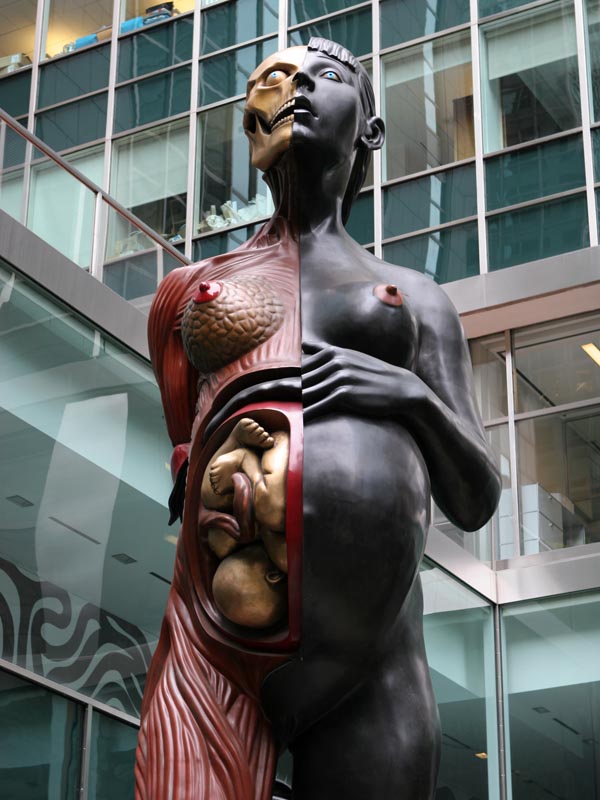http://skulladay.blogspot.com
http://en.wikipedia.org/wiki/Damien_Hirst
The 18th Century skull is entirely covered in 8,601 jewels, while new teeth were made for the artwork at a cost of £14m. The centrepiece of the 41-year-old's creation is a pear-shaped pink diamond, set in the skull's forehead. The £12m-worth of diamonds are said to be ethically sourced. Hirst said his piece, called For the Love of God, is "uplifting, takes your breath away". -- "It works much better than I imagined. I was slightly worried that we'd end up with an Ali G ring," he added. "You just want it to be flawless, like a diamond is a flawless. We wanted to put them everywhere," Hirst said of the skull. "They go underneath, inside the nose. Anywhere you can put diamonds, we've put diamonds. "I wouldn't mind if it happened to my skull after my death," he added. The artist said that he was inspired by an Aztec turquoise skull at the British Museum, and hopes that his work will eventually be displayed at the institution.
• For The Love of God, a platinum cast of an 18th century skull covered in 8,601 diamonds.
http://en.wikipedia.org/wiki/For_the_Love_of_God_(artwork)
• The Virgin Mother, a massive sculpture depicting a pregnant female human, with layers removed from one side to expose the fœtus, muscle and tissue layers, and skull underneath. This work was purchased by real estate magnate Aby Rosen for display on the plaza of one of his properties, the Lever House, in New York City.
http://www.wirednewyork.com/images/art/damien_hirst_virgin_mother.jpg
http://www.wirednewyork.com/images/art/damien_hirst_virgin_mother.jpg
• The Inescapable Truth, (2005). Glass, steel, dove, human skull and formaldehyde solution.

• The Death of God, (2006). Household gloss on canvas, human skull, knife, coin and sea shells. This painting, which is a part of a group of others which were made in Mexico, are believed to be "the beginning of Hirst's Mexican period".
• Hirst unveils £50m diamond skull", BBC, 1 June 2007. Retrieved 1 June 2007.
http://news.bbc.co.uk/2/hi/entertainment/6712015.stm





